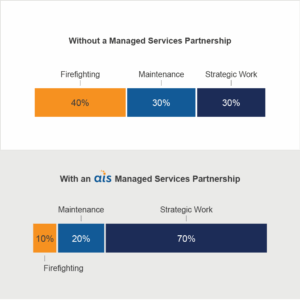With the increasing popularity of GitHub as a central hub for code, GitHub Actions has emerged as a pivotal tool for automating software workflows. As organizations seek to streamline their development processes and consolidate repositories from platforms like Azure DevOps (ADO) and SVN, the move to GitHub Actions becomes a compelling option. This post explores the technical intricacies of GitHub Actions, comparisons with Azure DevOps Pipelines, and best practices for a successful migration.
Understanding GitHub Actions
GitHub Actions is an integrated CI/CD tool that allows developers to automate tasks within their software projects. It supports a variety of triggers based on GitHub events, such as pushes, pull requests, and issues. Workflows are defined using YAML syntax, stored in the .github/workflows/ directory of a repository. This event-driven architecture enables developers to execute workflows based on specific conditions, providing significant flexibility in deployment strategies.
In contrast, Azure DevOps Pipelines, while powerful, operates as a more general CI/CD solution not tied exclusively to GitHub. This means developers need to account for differences in syntax, configuration, and extensibility when migrating workflows from ADO to GitHub Actions. For instance, Azure DevOps supports a richer templating system and parameterization, while GitHub Actions focuses on simplicity and community-driven extensibility through a marketplace of reusable actions.
Read more about concepts related to GitHub Actions and how they work on GitHub’s official documentation site.
Getting Started with GitHub Actions
To kickstart your journey with GitHub Actions, you need to set up a workflow.
Begin by creating a new repository or using an existing one on GitHub. After navigating to the ‘Actions’ tab, you’ll find an intuitive interface displaying available workflows, runs, caches, and runners. The system allows for self-hosted runners, which provide the flexibility to execute workflows on your infrastructure. Make sure to check out the QuickStart guide for GitHub Actions on GitHub’s official docs.
One of the common queries is about manually triggering workflows. Unlike ADO, where manual triggers are straightforward, GitHub Actions requires explicit configuration. By adding workflow_dispatch to your workflow YAML, you enable manual execution through a button in the GitHub UI. This flexibility is crucial for testing workflows without relying solely on automated triggers.
Key Differences in Configuration and Syntax
When moving from Azure DevOps (ADO) to GitHub Actions, it’s important to recognize not just the structural differences but also the shift in approach. Azure DevOps supports both YAML-based pipelines and a GUI-driven “classic” editor, allowing teams to mix declarative and manual setups. GitHub Actions, in contrast, is entirely YAML-driven and encourages a more modular, code-centric CI/CD philosophy. Ultimately, GitHub Actions promotes flexibility and visibility at the cost of requiring a deeper understanding of how CI/CD works under the hood.
Here is a brief summary of the differences between GitHub Actions and Azure Pipelines:
Feature
Configuration Language
pipeline location
Trigger Events
Matrix builds
Reusable Workflows
Artifact Management
Environments & Approvals
Secrets Management
Integrations
Github Actions
YAML only
.github/workflows
GitHub events
Simple strategies for parallel jobs
composite actions and workflow_call
Native artifact storage upload/download
optional manual approvals
per repo, org, or environment
Tight integration with GitHub Packages,Codespaces, Dependabot
Azure Pipelines
YAML or GUI (classic editor)
in repo root or in Azure DevOps UI
Git events, schedules, manual
via strategy block (less flexible)
Supports YAML templates for reuse
longer retention
gates, approvals, checks (more adv.)
Azure Key Vault + Pipeline Secrets
Deep integration with the rest of Azure DevOps suite (Boards, Repos, Artifacts, Test Plans)
For example, a typical ADO pipeline task for building a .NET project might look like this:
GitHub Actions emphasizes simplicity and composability—jobs are defined using built-in or community-contributed actions, and steps can be reused via composite actions or reusable workflows. This differs from ADO, where many tasks (like .NET builds or publishing artifacts) rely on first-party task libraries with predefined inputs.
- task: DotNetCoreCLI@2
inputs:
command: 'build'
projects: '**/*.csproj'In GitHub Actions, the equivalent would be:
- uses: actions/setup-dotnet@v4
with:
dotnet-version: '8.x'
- run: dotnet build **/*.csprojThis illustrates the need to map tasks and jobs from ADO to GitHub Actions carefully, as different platforms have varying methods for executing the same operations.
Here is a brief summary of syntactic differences between GitHub Actions and Azure Pipelines:
Feature
Trigger mechanism
Reuseablity
Plugin mechanism
Secrets
Matrix builds
Github Actions
on: events
Reusable workflows, composite actions
uses: (Marketplace actions)
secrets.*
Simple strategy.matrix
Azure Pipelines
trigger: branches/paths
YAML Templates
task: (built-in or extensions)
variables, secret variables
More verbose matrix setup
Best Practice for Migration
Successful migration to GitHub Actions involves a systematic approach. First, leverage the GitHub Importer, which provides tools tailored for different repository types, including consumer, enterprise, and local imports. This step is crucial for easing the migration process, especially when dealing with complex workflows.
To minimize disruptions, start with a small-scale migration. Choose 2-3 pipelines of varying complexity to understand the nuances of GitHub Actions better. Document the migration steps thoroughly and ensure your team is aligned on the migration strategy. Relying on tools like GitHub Copilot can also provide valuable assistance during the conversion of pipeline code, especially when integrating with other services.
You can read more detailed information on performing migrations to GitHub Actions on GitHub’s official documentation site.
Considerations for Security
GitHub provides a robust set of security features for organizations and repositories, though its flexibility can sometimes lead to confusion or misconfiguration if not carefully managed. With GitHub Actions, users have the ability to tailor their security setup based on their needs, choosing from a range of options such as secret scanning, Dependabot for dependency management, and code scanning for vulnerabilities. These settings are configurable at both the repository and organization levels, giving teams control over how security is enforced.
Enterprise and GitHub Pro users benefit from even more advanced security tools and configuration options. While GitHub offers strong default settings, it’s important for organizations to customize these configurations to align with their specific security requirements. Notably, self-hosted enterprise environments may not match the security standards of GitHub.com by default, as they often need to adhere to stricter internal policies.
For this reason, it’s critical to involve your security or IT teams early in the migration process. A clear security strategy ensures compliance with organizational policies and helps avoid potential vulnerabilities. Proper planning and coordination are key to taking full advantage of GitHub’s security capabilities.
Read more about security concepts related to GitHub Actions here.
Links
Here are the links mentioned in this document:






